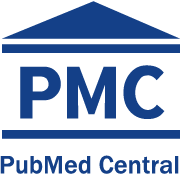Human and animal fasciolasis in Peru: impact in the economy of endemic zones
DOI:
https://doi.org/10.17843/rpmesp.2010.274.1535Keywords:
Fasciola, Public health, Endemic diseases, Economics, PeruAbstract
Fasciola hepatica is the causative agent of fasciolosis in Peru; the disease is an important public health problem by the high prevalence of the human infection affecting mainly children and a major veterinary problem by the high rates of infected livestock. The human disease is endemic in the Sierra and the Coast but sporadic in the Amazonia, and reported in 18 Departments, while the animal infection in 21 of 24 Departments of Peru. Transmission occurs in Andean rural populations engaged in agriculture, but recently an increasing number of people became infected in the cities. The epidemiological situation in Peru includes i) Departments with non-autochtonous cases, where infection occurs by consumption of contaminated vegetables brought from endemic areas or infection is acquired by visit to endemic areas; ii) Departments with hypoendemic and mesoendemic villages, where transmission occurs by ingest of contaminated vegetables and prevalence ≤10%; and iii) Departments with hyper-endemic villages with human prevalence >10 %, with an intense transmission by consumption of contaminated vegetables. The disease affects bovine, sheep, goat, swine, equine, South American camelids, rabbits and guinea pigs. The negative impact of fasciolosis in the livestock economy is not lesser than US$ 50 million per year, estimation based on the prevalence and the number of condemned livers in the abattoirs. It is difficult to estimate the economic impact of this infection in the human health due to its status of neglected disease, but fasciolosis is hyper-endemic in the poorest Andean areas of Peru where the situation has to be recognized as a public health emergency.Downloads
Download data is not yet available.
Downloads
Published
2010-12-23
Issue
Section
Symposium
How to Cite
1.
Espinoza JR, Terashima A, Herrera-Velit P, Marcos LA. Human and animal fasciolasis in Peru: impact in the economy of endemic zones. Rev Peru Med Exp Salud Publica [Internet]. 2010 Dec. 23 [cited 2025 May 13];27(4). Available from: https://rpmesp.ins.gob.pe/index.php/rpmesp/article/view/1535





























